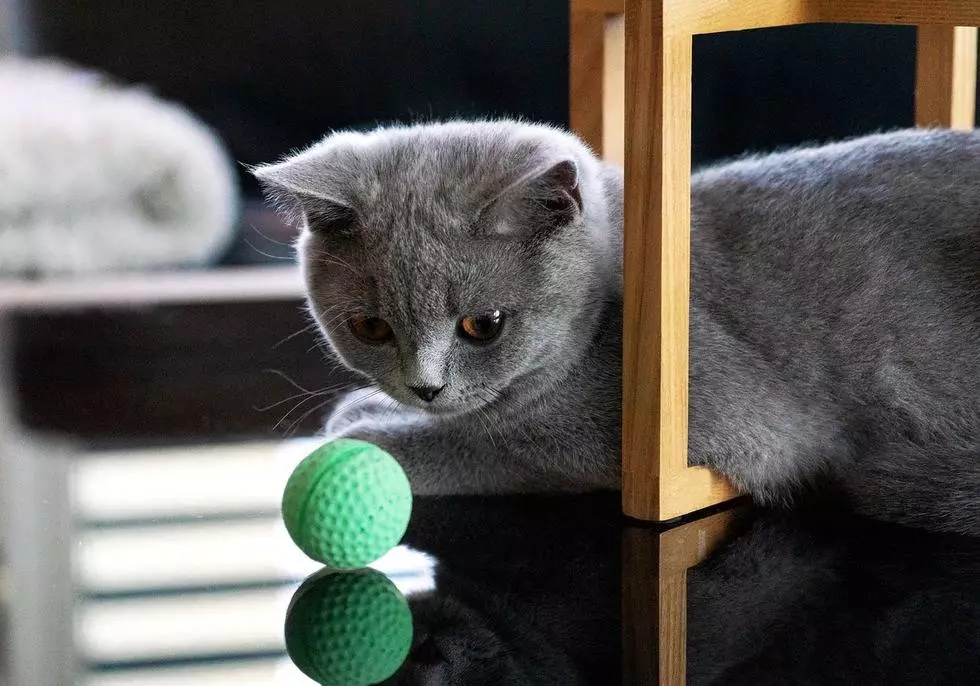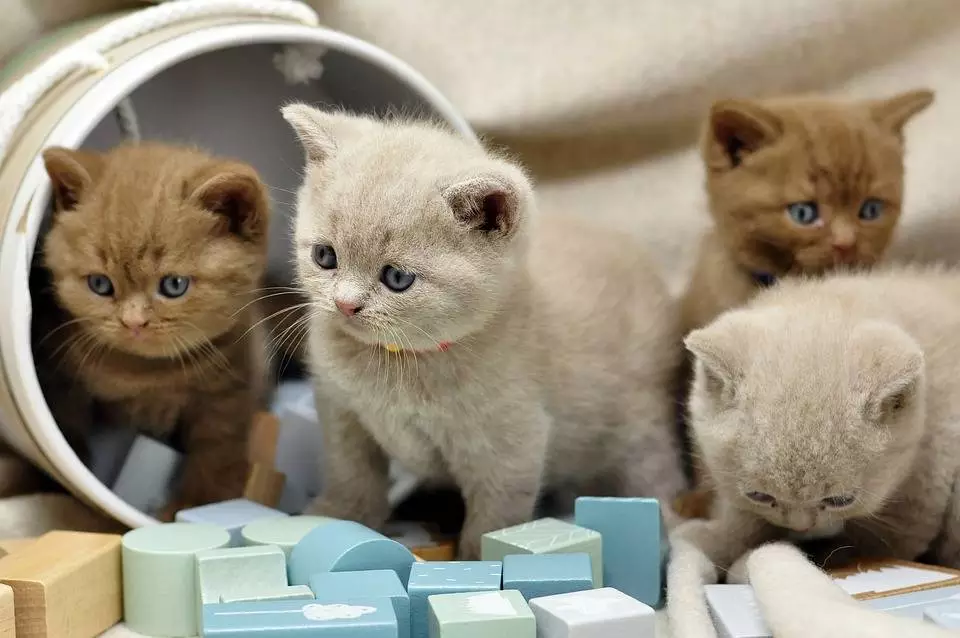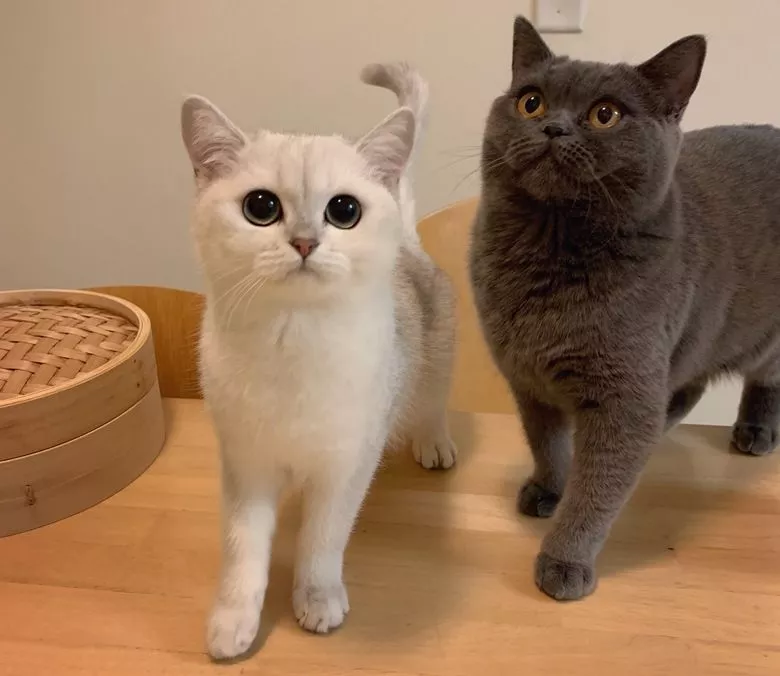Do British Shorthair cats have a friendly personality? Well, British Shorthair cats exhibit friendly traits as feline companions. They are remarkably devoted and affectionate towards their family members. While they may not necessarily be lap cats or overly cuddly kittens, they do exhibit their fondness by seeking proximity to their owners.
I have been considering for quite a while now to expand our family by adding two additional cats. I’ve been wondering about the friendliness of British Shorthairs as cats, so I made up my mind to gather information from online sources as well as from friends and family members who already have multiple cats.
But, are British Shorthairs cats friendly with other animals as well?
The Answer is Yes, On average, British Shorthairs are known to be friendly cats, and they have the capacity to adapt to new environments over time. However, similar to humans, they may require an adjustment period to settle into their new surroundings. As a result, it’s important to be prepared for occasional instances of huffing and hissing during this transitional phase.
It’s worth mentioning that British Shorthairs display a friendly and adaptable nature not only towards their fellow feline companions but also towards other pets, with a sensible approach, of course! However, it’s important to understand that they will still perceive animals like fish or birds as prey, and may try to interact with them accordingly based on their instinctual behavior.
Also Read: Can Cats Eat Vegetables?
What is the British Shorthair’s personality?

The personality of the British Shorthairs exhibit a friendly demeanor, although they may not be excessively affectionate. Their thick fur can make close contact feel overly warm, so they aren’t inclined to cuddle. However, they do enjoy staying in close proximity to their human companions when at home, even if they don’t seek out lap time.
Moreover, British Shorthairs are content spending time alone when the family is away from home. These cats are not particularly energetic or athletic, so they don’t require a lot of physical activity. This characteristic makes them well-suited for apartment living, as they don’t have a strong need for ample space to roam and run around.
It’s all relative:
First and foremost, it’s important to recognize that while British Shorthairs are generally sociable, each cat is unique and may respond differently to new situations.
Some cats thoroughly enjoy companionship and may warmly welcome a new friend, while others might instinctively seek a secure hiding spot. It’s essential to be aware that there is a possibility of direct aggression, as every cat has its own temperament and personality.
We must keep in mind that British Shorthairs have a preference for maintaining a certain level of distance. It brings to mind the famous quote from Garfield: “It’s not that I dislike you, I just don’t like you near me.” This sentiment can be applied to their interactions with both humans and other animals alike. British Shorthairs may not actively seek out close physical contact and prefer their personal space. It’s important to respect their boundaries and understand that they may not be as inclined to engage in constant physical closeness as some other breeds.
How do I know My British Shorthair friendliness?
While British Shorthairs generally have a friendly disposition towards other cats, it is important to note that their acceptance is usually not immediate. It would be quite surprising if they instantly embraced another cat. Cats, in general, tend to be territorial, and although British Shorthairs may differ from the norm (in my opinion, at least), their initial instinct is to defend their territory. Therefore, introducing a new cat to the household is a gradual process that requires time to establish a “power structure.” Planning and taking specific steps in advance can make this transition smoother and more manageable.
The level of friendliness between British Shorthairs and other cats is also influenced by factors such as age and gender. Generally, introducing a kitten to your existing cat may be easier than introducing another adult cat. This is because kittens have less developed competitiveness and tend to adapt more readily. Additionally, adult male British Shorthairs often establish rapport more quickly with adult female cats compared to other adult males.
Also Read: Do Cats Kill & Eat Squirrels?
Things to take care before direct introduction with other cats

It is crucial to understand that cats are different from humans, and what may work for us in certain situations may not work for them. Therefore, if you are tempted to simply put them together and hope for the best, I strongly advise against it. It will not be successful.
This principle applies to both your current cat and the new cat. Introducing them should always be done gradually, taking specific steps to ensure a proper introduction process. Rushing the process can lead to stress, conflicts, and difficulties in establishing a harmonious relationship between the cats.
A crucial step in the introduction process is to initially keep the new cat and your existing cat in separate rooms. This allows them to acclimate to the new environment and become familiar with each other’s scents and sounds gradually. It is important to follow this order of progression before allowing them to interact directly. Each step should not be missed or skipped, as there are specific reasons for the sequence.
Additionally, it is important to note that different methods should be employed when introducing a kitten versus introducing an adult cat. Many veterinarians, breeders, and experts recommend the use of a pet pen when introducing a kitten to facilitate a controlled and safe interaction.
Does Hosting playdates help?
While there are exceptions to the general rule, it’s worth noting that individual cat dynamics can vary. I have 2 friends who also are car owners. So whenever we host playdates our cats get along well most of the time, even after being apart for extended periods. Occasionally, my British shorthair shows minor displays of dissatisfaction, but overall, there is no significant drama. It’s delightful to witness the amusing moments and funny videos of all three cats enjoying themselves.
It is crucial to be aware that introducing a new cat to your household comes with a risk of potential challenges or failures in establishing a positive relationship. If such issues arise, it is important to act swiftly and take appropriate measures to address the situation.
Is it better to have two British Shorthairs?

British Shorthairs are often considered independent cats who can handle being alone quite well. They typically don’t suffer from separation anxiety and can take care of themselves while keeping your furniture intact. However, having more than one British Shorthair can actually be beneficial. It provides an opportunity for increased activity and engagement. Since British Shorthairs, like other indoor and neutered cats, have a tendency to gain weight, incorporating fun and playful exercise into their routine can be beneficial for their overall health and well-being.
When purchasing my first British Shorthair cat, Frank, I received advice from people suggesting that I should consider buying two cats from the same litter. The reasoning behind this suggestion was that since they had not been separated, they would already have a strong bond and would remain more active and playful together. Initially, I wasn’t convinced and didn’t fully understand the benefits. However, with the knowledge I have now, I realize that it was a mistake to overlook this option. If you have the appropriate conditions and financial means, exploring the possibility of getting two cats from the same litter can be truly worthwhile. It can enhance their overall well-being and provide them with a constant source of companionship and engagement.
Conclusion
In conclusion, British Shorthairs are known to be generally friendly towards other cats. However, it’s important to remember that each cat has a unique personality and may respond differently to social interactions. While British Shorthairs have a reputation for being amiable, it’s crucial to approach introductions and interactions with caution, respect their individual boundaries, and be prepared for potential variations in their reactions.
British Shorthair Cats FAQs
Are short haired cats good with kids?
British Shorthairs derive pleasure from the companionship of humans and frequently develop strong bonds with their families, including children. They are known for being excellent companions for families with kids. Their calm and gentle temperament makes them highly suitable for interacting with children.
Furthermore, British Shorthairs exhibit patience and tolerance, enabling them to handle the exuberance and enthusiasm of children without becoming easily provoked. They are less prone to scratching or biting when faced with provocation, making them a safer choice for young children.
What is the most popular color of British Shorthair?
Blue-gray cats, often called British blues, are probably the most popular color choice of British shorthair fanciers.
What are the most common domestic British Shorthairs colors?
Cat associations recognize approximately 80 different color combinations for British Shorthair cats. Among the most prevalent colors seen in British Shorthairs are black, Blue, Grey, Silver, Cream, red and Bi-colour.
What are the most common British Shorthairs Patterns?
The color patterns most commonly seen in British Shorthairs include black and red, blue and cream, chocolate and red, cinnamon and red, as well as lilac and cream. Some British Shorthairs may also exhibit a tortoiseshell coat with a “smoke” effect, characterized by a lighter, typically silver-colored undercoat.
What is the lifespan of British Shorthair?
The average lifespan of the British Shorthair is a robust 12–20 years. The breed doesn’t have many genetic or common medical conditions but, like any cat breed, some common health issues can affect them.
How much does a British shorthair cat cost?
The cost of British Shorthair kittens from a reputable breeder can range from $500 to $4,500, which is influenced by factors such as location, age, and pedigree. However, it’s important to note that British Shorthair cats may also be available for adoption from specialty purebred rescues.
Why are British Shorthair cats so expensive?
Rarity is a significant factor that affects the price of cats, including British Shorthairs. While British Shorthairs are not considered a rare breed, their popularity places them among the top 10 breeds, which in turn can drive up their price. The high demand for British Shorthair cats contributes to their increased cost in the market.
How do British Shorthairs respond to training?
British Shorthairs possess high intelligence, but they don’t flaunt it. You won’t find them breaking into your cabinets, stealing food, or getting into impossible places just to showcase their cleverness. They are intelligent in a more subtle and understated manner.
These adorable kitties will impress you with their wit by swiftly grasping whatever you attempt to teach them. Potty training will be a breeze, as they quickly understand its purpose. They will readily learn the importance of a scratching post, saving your furniture from their claws. Moreover, you’ll have a delightful time engaging in various games and activities with them, as they enthusiastically participate and bring joy to your playtime.
Your British Shorthair will derive pleasure from learning tricks, engaging in activities that are meaningful and purposeful with you, and solving food puzzles. These endeavours serve as excellent means to provide them with the cognitive stimulation necessary for their entertainment and overall happiness.
Do British Shorthairs hate hugging?
British Shorthairs are undeniably adorable. Their resemblance to real-life teddy bears often tempts us to hug them tightly. However, it’s important to resist that urge. These feline companions prefer a bit more distance and appreciate being able to enjoy your company in their own unique way. Allowing them the space they desire will ensure a harmonious and comfortable interaction between you and your furry friend.
If you persist in hugging and petting a British Shorthair against their preference, you may push them away. Unlike some other breeds that may retaliate if pushed too far, a British Shorthair will choose to remove themselves from the situation and find solace on a scratching post. Your overzealousness might make them hesitant to come close to you in the future.
Why do British Shorthair cats hate being picked up?
Similar to hugging, picking up a British Shorthair without a valid reason can have the same effect. From their perspective, it’s akin to pulling their tail—uncomfortable and excessively intrusive. While these kitties display patience during grooming sessions, they do not appreciate being randomly picked up and carried around without cause. It’s best to respect their boundaries and allow them to maintain their sense of independence and comfort.

Hi, this Sienna Metts, the purr-fect authority in the captivating world of feline wisdom. I live in White Plains, NY. With years of experience in studying and understanding the behavior, health, and unique traits of different cat breeds, I have earned a well-deserved reputation as a feline connoisseur. Through my articles, I’ll be sharing captivating stories, practical advice, and expert tips on topics ranging from breed characteristics, care and eating guidelines to training techniques and holistic health solutions.











